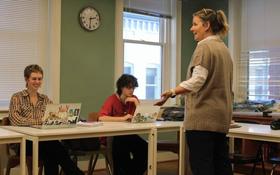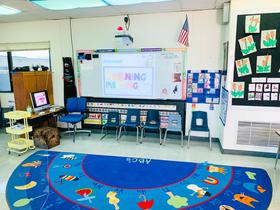For the 2025-26 school year, there are 7 public schools serving 6,843 students in the neighborhood of South Montebello, Bell Gardens, CA.
The top ranked public schools in South Montebello are Bell Gardens Elementary School, Cesar E. Chavez Elementary School and Bell Gardens Intermediate. Overall testing rank is based on a school's combined math and reading proficiency test score ranking.
The neighborhood of South Montebello, Bell Gardens, CA public schools have an average math proficiency score of 15% (versus the California public school average of 34%), and reading proficiency score of 29% (versus the 47% statewide average).
Minority enrollment is 100% of the student body (majority Hispanic), which is more than the California public school average of 80% (majority Hispanic).
Best Public Schools in the neighborhood of South Montebello, Bell Gardens, CA (2025-26)
School
(Math and Reading Proficiency)
(Math and Reading Proficiency)
Location
Quick Facts
Rank: #11.
Bell Gardens Elementary School
(Math: 28% | Reading: 29%)
Rank:
Rank:
4/
Bottom 50%10
5620 Quinn St.
Bell Gardens, CA 90201
(562) 927-1223
Bell Gardens, CA 90201
(562) 927-1223
Gr: K-5 | 659 students Student-teacher ratio: 16:1
Rank: #22.
Cesar E. Chavez Elementary School
(Math: 26% | Reading: 31%)
Rank:
Rank:
4/
Bottom 50%10
6139 Loveland St.
Bell Gardens, CA 90201
(323) 773-1804
Bell Gardens, CA 90201
(323) 773-1804
Gr: K-5 | 747 students Student-teacher ratio: 20:1
Rank: #33.
Bell Gardens Intermediate
(Math: 19% | Reading: 34%)
Rank:
Rank:
4/
Bottom 50%10
5841 Live Oak St.
Bell Gardens, CA 90201
(562) 927-1319
Bell Gardens, CA 90201
(562) 927-1319
Gr: 6-8 | 822 students Student-teacher ratio: 18:1
Rank: #44.
Garfield Elementary School
(Math: 22% | Reading: 28%)
Rank:
Rank:
3/
Bottom 50%10
7425 South Garfield Ave.
Bell Gardens, CA 90201
(562) 927-1915
Bell Gardens, CA 90201
(562) 927-1915
Gr: K-5 | 499 students Student-teacher ratio: 17:1
Rank: #55.
Bell Gardens High School
(Math: 7% | Reading: 40%)
Rank:
Rank:
3/
Bottom 50%10
6119 Agra St.
Bell Gardens, CA 90201
(323) 826-5151
Bell Gardens, CA 90201
(323) 826-5151
Gr: 9-12 | 2,139 students Student-teacher ratio: 19:1
Rank: #66.
Suva Intermediate
(Math: 12% | Reading: 32%)
Rank:
Rank:
3/
Bottom 50%10
6660 East Suva St.
Bell Gardens, CA 90201
(562) 927-2679
Bell Gardens, CA 90201
(562) 927-2679
Gr: 6-8 | 705 students Student-teacher ratio: 22:1
Rank: #77.
Suva Elementary School
(Math: 17% | Reading: 22%)
Rank:
Rank:
2/
Bottom 50%10
6740 East Suva St.
Bell Gardens, CA 90201
(562) 927-1827
Bell Gardens, CA 90201
(562) 927-1827
Gr: K-5 | 595 students Student-teacher ratio: 18:1 Minority enrollment: 99%
Frequently Asked Questions
What are the top ranked public schools in the neighborhood of South Montebello, Bell Gardens, CA?
The top ranked public schools in the neighborhood of South Montebello, Bell Gardens, CA include Bell Gardens Elementary School, Cesar E. Chavez Elementary School and Bell Gardens Intermediate.
How many public schools are located in the neighborhood of South Montebello, Bell Gardens?
7 public schools are located in the neighborhood of South Montebello, Bell Gardens.
What is the racial composition of students in the neighborhood of South Montebello, Bell Gardens?
the neighborhood of South Montebello, Bell Gardens public schools minority enrollment is 100% of the student body (majority Hispanic), which is more than the California public schools average of 80% (majority Hispanic).
Recent Articles

Gifted & Talented Programs in Public Schools
Explore opportunities and controversies in gifted & talented programs鈥攅quity, outcomes, and models shaping public education in 2025.

Evaluating STEM in Public Schools: A Parent & District Guide
A guide to evaluating STEM programs in public school districts鈥攎etrics, best practices, equity, and 2025 trends for parents and community stakeholders.

Special Education in Public Schools: Understanding IEPs & Services
What parents need to know about IEPs, services, rights, and how to get the best support in public schools in 2025.
